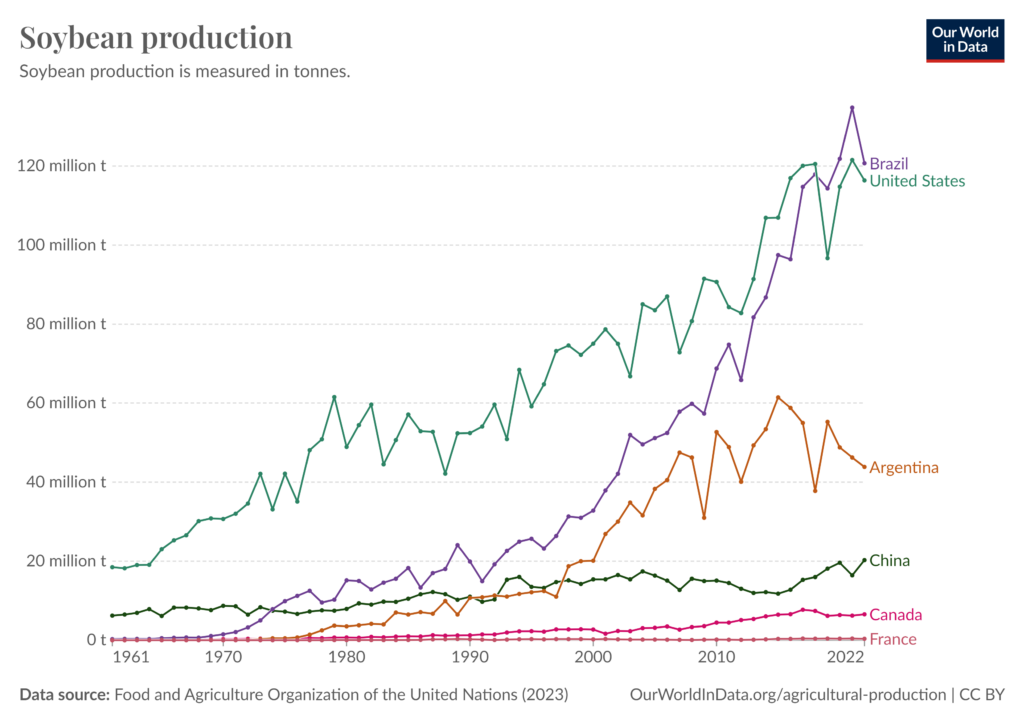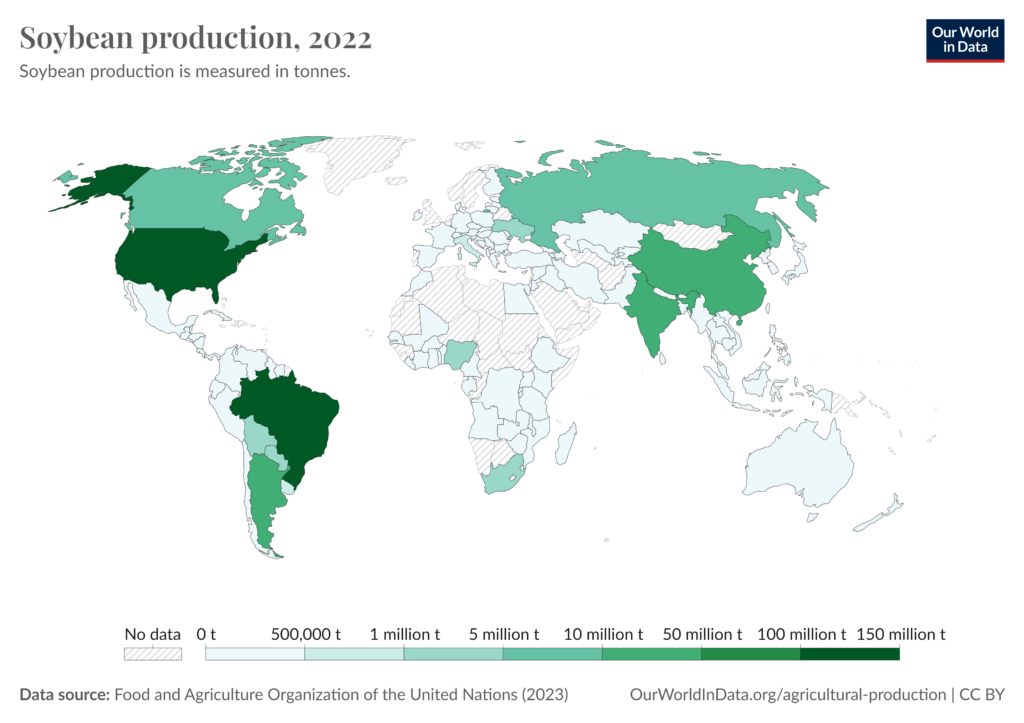Community
osapeers.org
This article is available in
About this article

Jessica Hollfelder
AuthorAssigned categories
Soy is a widely used commodity in global agriculture, primarily for the production of animal feed and food. Global demand for soy continues to grow, leading to a massive expansion of soybean acreage. This has serious environmental consequences, particularly in South America, where soy is grown on more than 55 million hectares: large areas of valuable rainforest are cleared to make way for soy plantations.
As one of the largest consumers of soy, the European Union contributes to global deforestation. To curb this destructive trend, the EU has adopted the EU Deforestation Regulation (EUDR). This regulation requires companies importing soy into the EU to demonstrate that their products do not contribute to deforestation. This poses significant challenges for the soy industry, particularly in terms of improving the traceability and sustainability of supply chains.
In recent decades, soy has emerged as one of the world’s most important agricultural products. About 76% of the global soy production is used as animal feed for livestock, while only a much smaller proportion is used to make plant-based foods and beverages such as tofu or soy milk. Soy is also used to produce soybean oil, which is employed in both the food industry and the production of biodiesel.

Cultivation of soy is heavily concentrated in a few countries, with the largest producers being Brazil, the United States and Argentina. Brazil, which produces more than 120 million tonnes of soy per year, is the largest exporter. However, this dominance of the global market poses significant environmental and social challenges. In fact, according to the International Institute for Sustainable Development (IISD), less than 3% of soybeans are produced in compliance with sustainability standards. In these countries, the extensive soy cultivation is leading to large-scale deforestation, particularly in the tropical rainforests of the Amazon (South America) and the savannahs of the Cerrado (Brazil). These areas are among the most biodiverse ecosystems in the world, and their destruction is having a devastating impact on biodiversity.

In addition to deforestation, soy cultivation exacerbates several other environmental problems. Monocultures grown on vast tracts of land lead to soil degradation and increase erosion. In addition, the intensive cultivation of soy requires the use of large amounts of pesticides and fertilizers, which can affect water quality and the health of local populations.
In addition to the environmental impacts, there are also significant social consequences. In many growing regions, indigenous communities and small farmers are forced off their land to make way for large-scale soybean plantations. This leads not only to the loss of traditional livelihoods, but also to social tensions and conflicts.
Not surprisingly, the impact on the Global South is clearly felt by local people. Dieter Overath is an ambassador for the United Nations Industrial Development Organization (UNIDO) and discussed the interplay of compliance regulations in the Global South with Alberto Zamora, CEO of osapiens.
Another characteristic of the soy supply chain is its international dimension. Much of the soy produced in South America is exported, particularly to the European Union, China and the United States. The logistical challenges associated with international trade, including long-distance transportation and intermediate storage in ports and silos, make traceability and compliance with environmental standards extremely difficult.
The soy supply chain is highly complex and one of the most globalized in agriculture. From planting to finished product, soy passes through numerous stages and regions on its way.
A typical supply chain might look like this: after being harvested by numerous smallholder farmers, the soy is often sold to local intermediaries who take it to collection points where it is sorted and stored. From there, it is sent to companies that process the soy into meal and oil. This process can be particularly critical in terms of EUDR because different batches are often mixed, making it almost impossible to trace individual soybeans. The further processing of soy into meal and oil, which are used in various industries such as food production and animal feed, adds another layer of complexity to the supply chain.
The different levels of the supply chain make it difficult to monitor and comply with sustainability criteria. This complexity is one of the biggest challenges in implementing the EU Deforestation Regulation (EUDR), which requires companies to ensure that imported soy is deforestation-free at all stages of the supply chain. To meet these requirements, it is essential to have full transparency, but also to use of modern technology to collect and analyze data along the entire supply chain.
The EUDR requires companies to provide accurate information on the geographic location of land plots cultivated to prove zero deforestation after 2020. This is particularly challenging as many small farmers and intermediaries lack the technical capabilities to collect and provide this data.
Implementing the EUDR will therefore also require close cooperation between the various stakeholders in the supply chain. Companies need to ensure that all parties involved – from farmers to processors and exporters – understand and are able to comply with the requirements of the Regulation.
Modern technologies such as satellite monitoring and AI make it possible to collect and analyze data in real time across the entire production process. For instance, satellite data can be used to regularly monitor plantation areas and ensure that no new areas were cleared through deforestation.
osapiens offers a platform solution that enables companies to efficiently meet the requirements of the EUDR. This platform makes it possible to digitally map the entire supply chain, accurately track the origin of soy and automatically generate due diligence statements. By integrating data from multiple sources, companies can respond quickly and effectively to any deviations and ensure that their supply chains comply with legal requirements.
The EU Deforestation Regulation (EUDR) marks a turning point for the soy industry, setting clear standards for sustainable and deforestation-free supply chains. While there are significant challenges to implementing the regulation, it also offers an opportunity to fundamentally transform soy cultivation and make it more sustainable in the long term.
For companies willing to invest in transparent and deforestation-free supply chains, the EUDR offers the opportunity to position themselves as leaders in the industry, and it could also have a far-reaching positive impact on the regions where soy is grown. Small farmers and indigenous communities could benefit from fairer trade practices and greater integration into global supply chains.